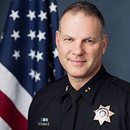In the summer of 2020, it often seemed like there were two diametrically opposed views about the role of policing.
The truth is that many public safety officials recognize that certain situations and incidents are better handled by an alternative response to traditional policing. Some officials are passionate advocates for partnerships that help incorporate additional community resources, redirect police resources where they’re needed the most and best serve communities.
“You have to have a blend, is what we’ve found,” says Tom Wieczorek, director of the Center for Public Safety Management, which is the exclusive provider of public safety service to the International City/County Management Association. “Mental health is probably not best handled by police. You’re not going to take a person suffering from addiction for a lifetime and cure them in 15 minutes. Often, they’re taken to jail, and normally they don’t receive counseling or treatment. It’s a revolving door.”
These partnerships don’t just spring up on their own. To improve call response, Wieczorek notes, communities must seek to understand how they’re currently responding, identify community resources and adopt appropriate 911 center equipment and processes — and then train dispatchers to direct the right resources to the right calls. Technology is often at the center of these efforts, with communities integrating partner organizations into computer-aided dispatch systems and supplying them with onboard vehicle routers and other equipment to keep them connected.
“It’s about re-envisioning the dispatch center,” Wieczorek says. “How can we be more effective? How can we best use the resources within the community? In the short term, it may be more work, but over the long term, it’s about solving problems rather than warehousing people.”
COMPLIMENTARY RESOURCES: Learn more about next-generation work centers and how you can transform your approach to public safety technology.
Denver Launches a New Approach to Public Safety Response
Denver launched the Support Team Assisted Response (STAR) program in June 2020, sending out vans staffed with paramedics and mental health clinicians instead of police officers for some calls. These teams treat people with mental health issues and connect them with services, and a six-month study of the new program showed immediate benefits.
The alternative team responded to 1,685 calls as of Sept. 9 — a volume that could potentially reduce Denver police calls for service by nearly 3 percent. With very few exceptions, STAR was able to resolve situations without the need for police intervention.
“We’ve seen a really solid response, and the teams are very busy,” says Jacob J. Woodard, Denver’s 911 IT manager. “These alternative response programs are new, and they’re a deviation from a prior train of thought for a lot of emergency services departments. That said, I think they should be taken as seriously everywhere, from a technology and operations perspective, as they have been in Denver. This has been success because we’ve given the program our full range of capabilities, both from a technology and an asset perspective, to make sure they can be as successful as possible from day one.”
One early example of this sort of partnership is Crisis Assistance Helping Out On The Streets, or CAHOOTS, a mobile crisis intervention program in Eugene, Ore. The response units are staffed by White Bird Clinic personnel using vehicles from the city of Eugene, and the program has been in place since 1989, diverting between 5 and 8 percent of police calls. The program receives around $800,000 a year in city funding, and in 2019, CAHOOTS handled nearly 19,000 calls for service.
An Oregon City Serves as a Model for Others to Follow
Eugene Police Chief Chris Skinner, who worked in departments without alternative response programs before coming to the city in 2018, calls CAHOOTS an “offramp” for calls that police really shouldn’t be responding to in the first place.
“We have a significant unhoused population, and many of those individuals suffer from mental health diagnoses or substance addiction or both,” Skinner says. “The calls can be anything from a check on someone who is nonresponsive to someone experiencing a mental health episode in traffic, all the way to suicide calls. The concept is trying to get your police officers focused on what they should be doing and finding an alternative way to respond to the other calls, and I think it’s the right approach.”
Skinner says that the “secret sauce” of the CAHOOTS program is the ability to triage the calls through the city’s existing 911 system. “The last thing we want to do is send three different resources to the same call without knowing who is going,” he says.
CAHOOTS vans are outfitted with mobile data terminals that allow teams to monitor and manage calls for service in much the same way that police officers do. And because the alternative response teams use the same radios and computer-aided dispatch system as police, they can quickly escalate calls, if needed.
“That’s the beauty of being on the same system,” Skinner says. “CAHOOTS workers have the ability to immediately call for assistance, and then our patrol teams immediately respond.”
KEEP READING: Check out these complimentary resources from CDW to evolve your public safety technology.
New 911 Center Tech Supports a Range of Dispatch Options
In Denver, the STAR program is supported by a $25 million 911 center that opened in 2019. When the facility debuted, city leaders touted the ability for operators to respond to calls faster through improved technology.
“We were able to start fresh with cabling and racking, and even some hardware,” Woodard says. “It gave us an opportunity for a blank slate, and it allowed us to build from the ground up in a way that lets us scale for the future.” At roughly 2,000 square feet, the data center at the new facility is nearly 10 times as large as the city’s previous 911 data center, Woodard adds.
Denver’s computer-aided dispatch system is on a Cisco unified collaboration and a Dell EMC platform and utilizes VMware, Microsoft operating systems and Microsoft SQL Server. Only around half of servers in the previous facility were virtualized, and Woodard says that the move to “90 percent” virtualization has had a number of benefits.
“When you virtualize, your entire call flow structure and utilization is all almost within one piece of hardware,” he says. “Now, if we need to restart a server because an interface is down, the restart process is quicker. Or, say we need to add a server: Instead of having to replace network connections, we can spin up a server in our VMware environment. Our ability to scale and our ability to troubleshoot has been enhanced tenfold.”
Virtualization has also streamlined the process of pushing out patches and updates, Woodard says. “In the past, you’d have to touch each machine individually.”
Wieczorek says he was “shocked” at how much money Denver and other cities have been able to save through alternative public safety response. One important development in 911 technology, he predicts, will be software programs that help departments to better track their calls and identify opportunities to trim expenses through more targeted response programs.
“The ability to produce next-generation reporting, and having that data that you can show to the community, is going to be important,” Wieczorek says. “I think that is going to be the technology that drives the future.”
EXPLORE: What are the technologies that can help you evolve your public safety response?














